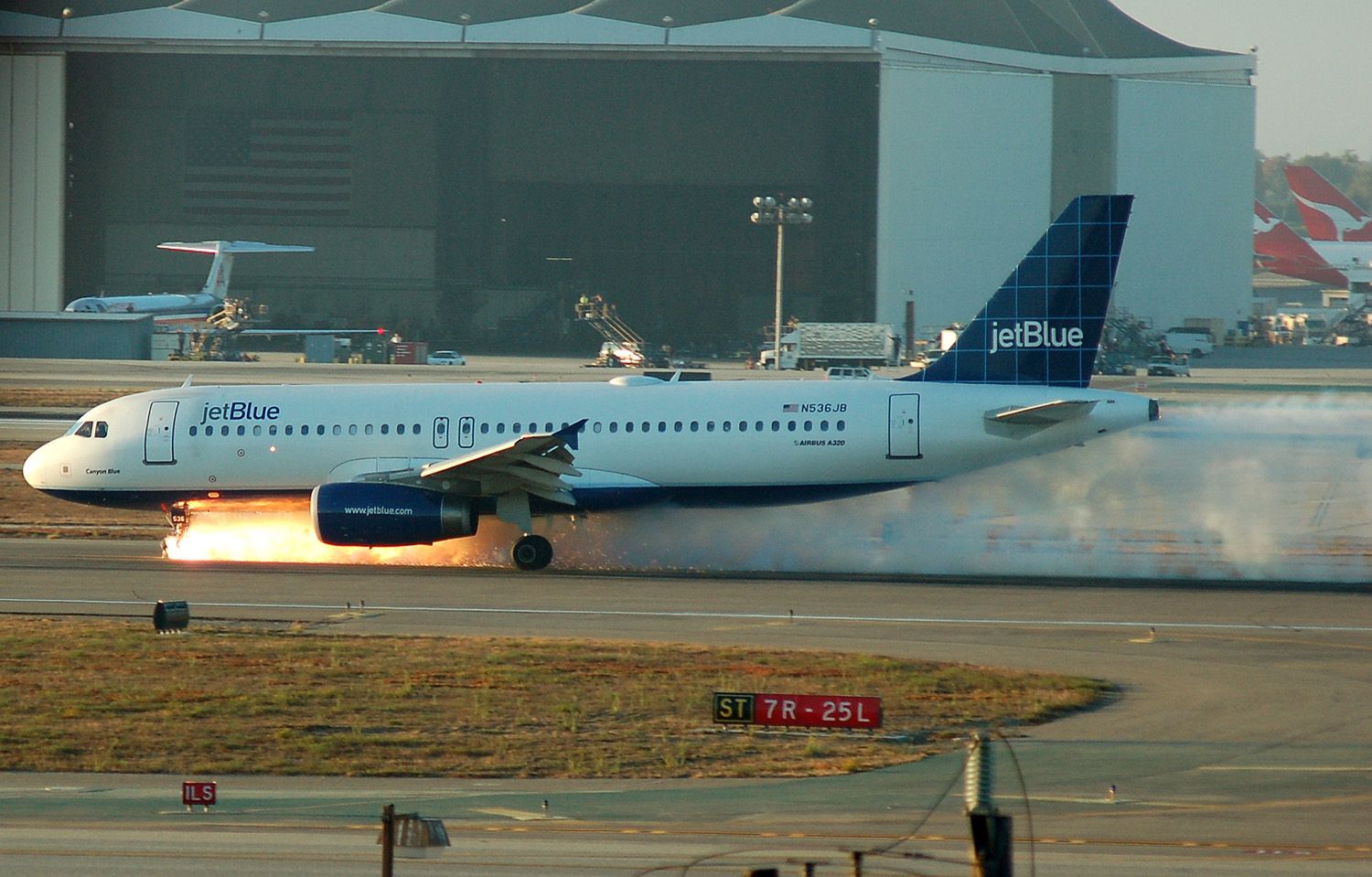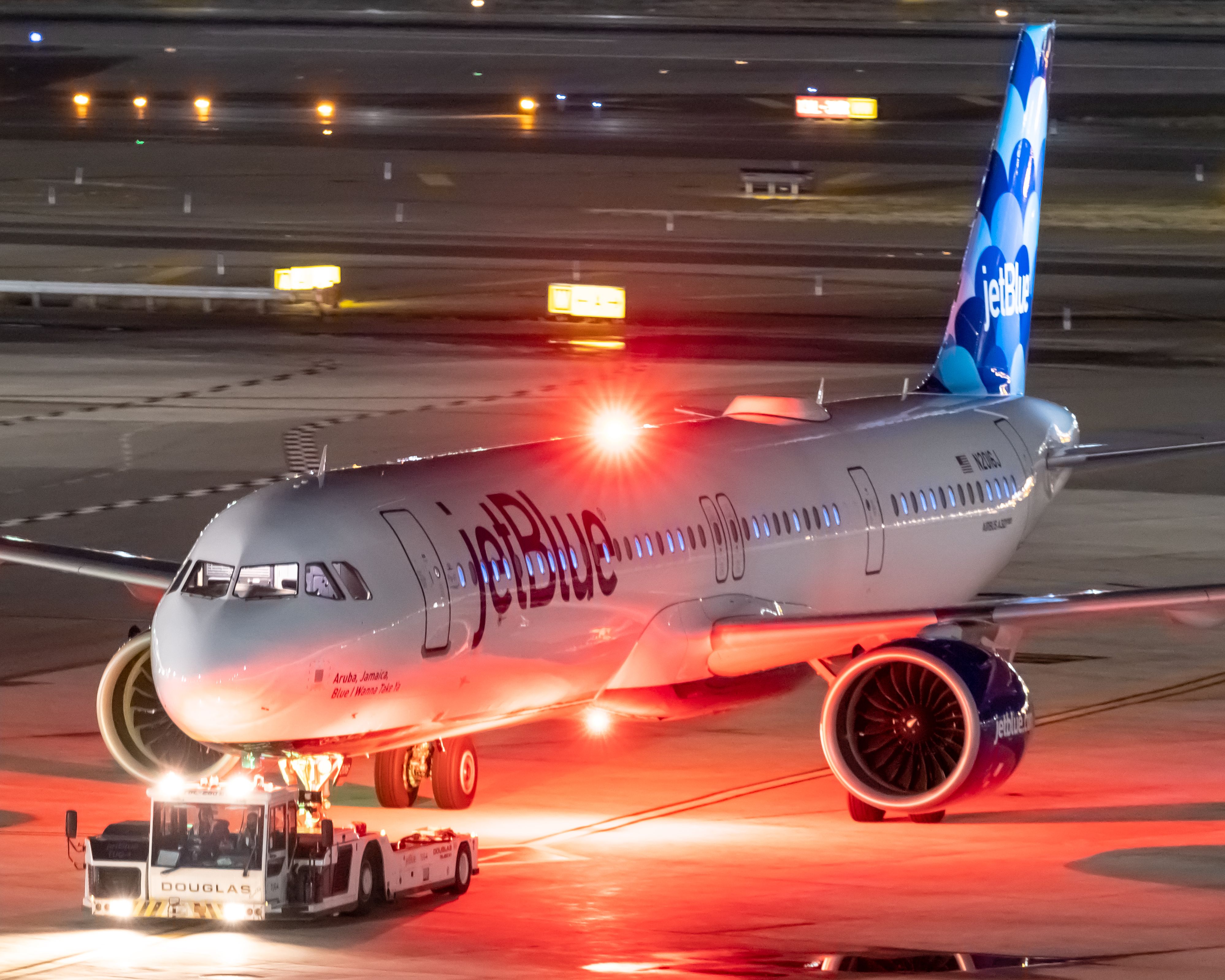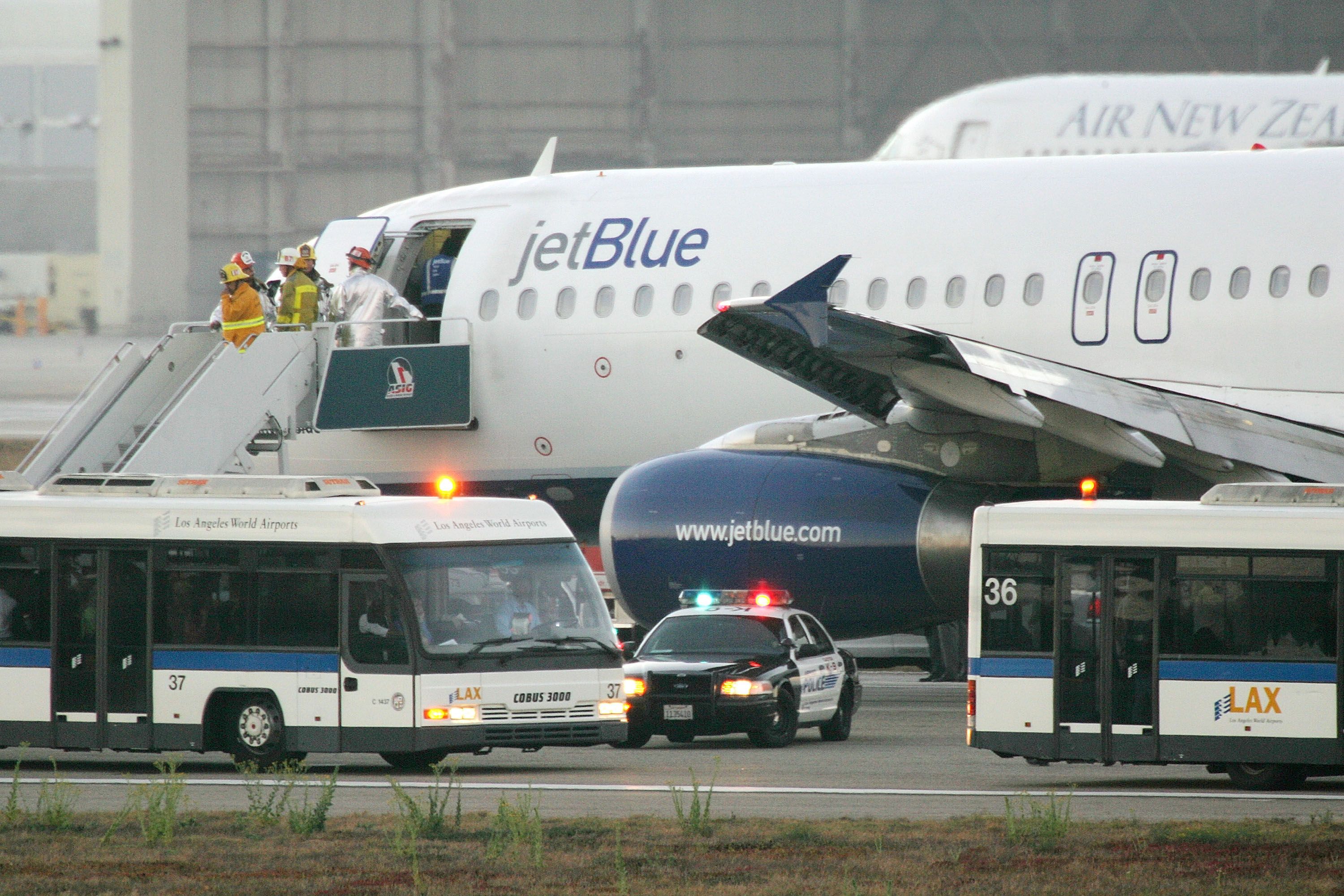On September 21, 2005, JetBlue Flight 292 took off from Hollywood Burbank Airport (BUR) in California for a transcontinental flight to John F. Kennedy International Airport (JFK) in New York. The aircraft, a three-year-old Airbus A320-232 with the registration N536JB, was carrying 140 passengers and six crew for the 2,465-mile flight to the East Coast.
The pilots could not retract the nose gear
Just after taking off from Burbank Airport at 15:17, the pilots realized they could not retract the nose wheel landing gear. They immediately decided to make a low pass over the JetBlue hub at Long Beach Municipal Airport (LGB) to allow officials in the tower to report what they could see. People looking at the plane from the ground could see that the nose gear wheel had rotated 90 degrees to the left.
Rather than attempting to land at Long Beach Airport, the captain decided to divert to Los Angeles International Airport (LAX). As the primary international airport for Southern California, LAX had longer, more expansive runways and more modern safety equipment than other nearby airports.
The Airbus A320 can not dump fuel
Because the plane was loaded with fuel for the cross-country flight, the pilots flew in a figure-eight pattern between BUR and LAX to burn off fuel before attempting to land. By doing this, they lessened the load on the landing gear and reduced the risk of the aircraft catching on fire. They had to remain flying and burn off fuel because the Airbus A320 family can not dump fuel.
Because JetBlue equips its planes with satellite television, all the passengers onboard were witnessing live what was happening as the plane circled over the Pacific Ocean. As the plane prepared to make an emergency landing, emergency services and fire engines were on the ramp, ready to go.
As the plane touched down on LAX runway 25L, the nose gear generated sparks and flames. To help prevent it from collapsing, the pilots did not apply reverse thrust to slow the aircraft down. The result was that it took the plane much longer to come to a stop 1,000 feet before running out of runway. Because runway 25L is 11,096 feet long, the aircraft landed safely. If they had tried to land at Long Beach Airport (LGB), they would have run out of runway as the longest runway at LGB is 10,000 feet.
When speaking about the landing, Wikipedia sources archived from the Seattle Times quote Los Angeles Fire Dept. Battalion Chief Lou Roupoli as saying:
"The pilot did an outstanding job. He kept the plane on its rear tires as long as he could before he brought the nose gear down."
As the plane came to a stop with its landing gear still intact, it was decided not to evacuate the aircraft using slides but by an airport stairs vehicle. Because JetBlue did not operate out of LAX, the plane was towed to a Continental hangar for evaluation. Once the hysteria had died down, experts said there was never a real danger to the passengers as the plane was engineered to tolerate certain failures and could land without its nose gear.
The media later reported that there had been seven other incidents of the nose gear wheels being locked out of position. Airbus denied that it was a design flaw and put the problem down to poor maintenance practices. Airbus had previously issued maintenance advisories to A320 owners, which were later mandated by the Federal Aviation Authority (FAA) and the French Direction Générale de l'Aviation Civile (DGAC).
The NTSB said worn-out seals were to blame
In its report on the incident, the National Transportation Safety Board (NTSB) said that worn-out seals were to blame and that the Brake System Control Unit (BSCU) system contributed to the problem. Following the NTSB report, Airbus upgraded the aircraft and resolved the issue.
The plane involved in the incident was repaired and returned to service. JetBlue did, however, change the flight number of the BUR to JFK flights from 292 to 358 and 359 in the opposite direction.



.gif)
.gif)

.jpg)